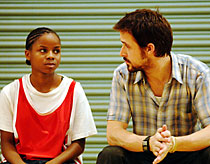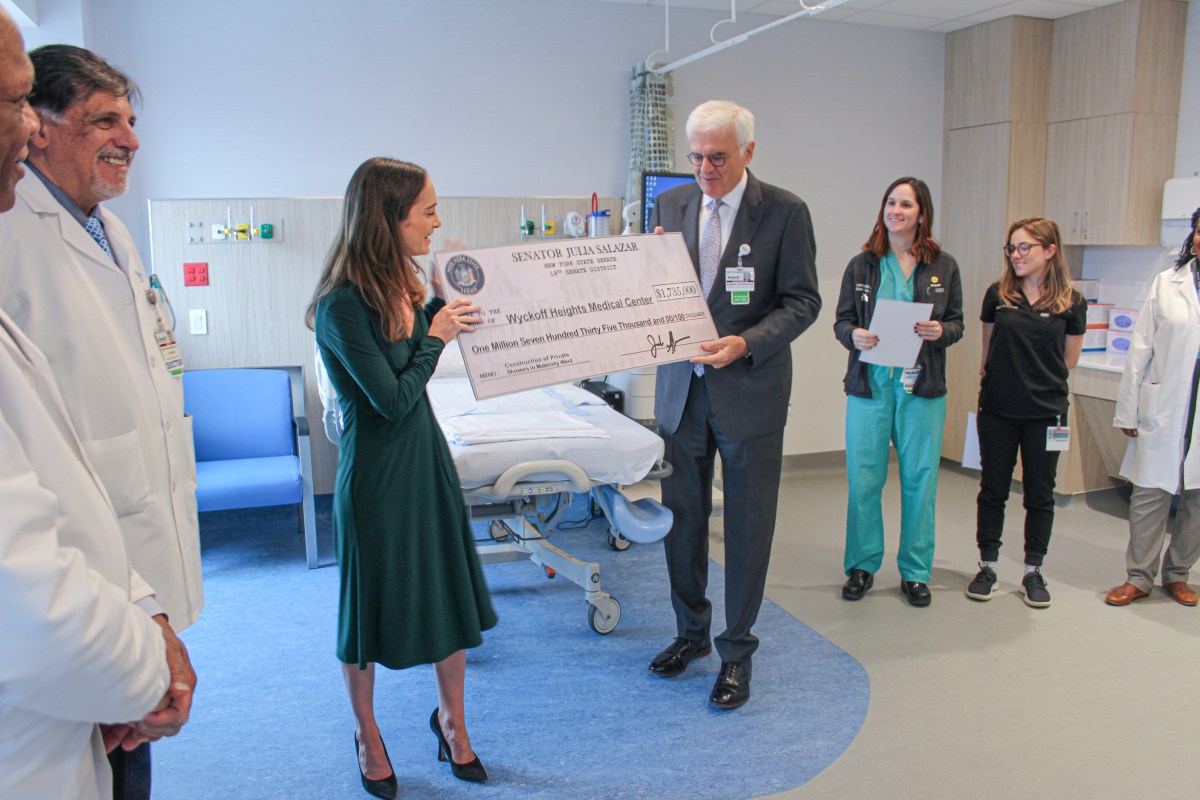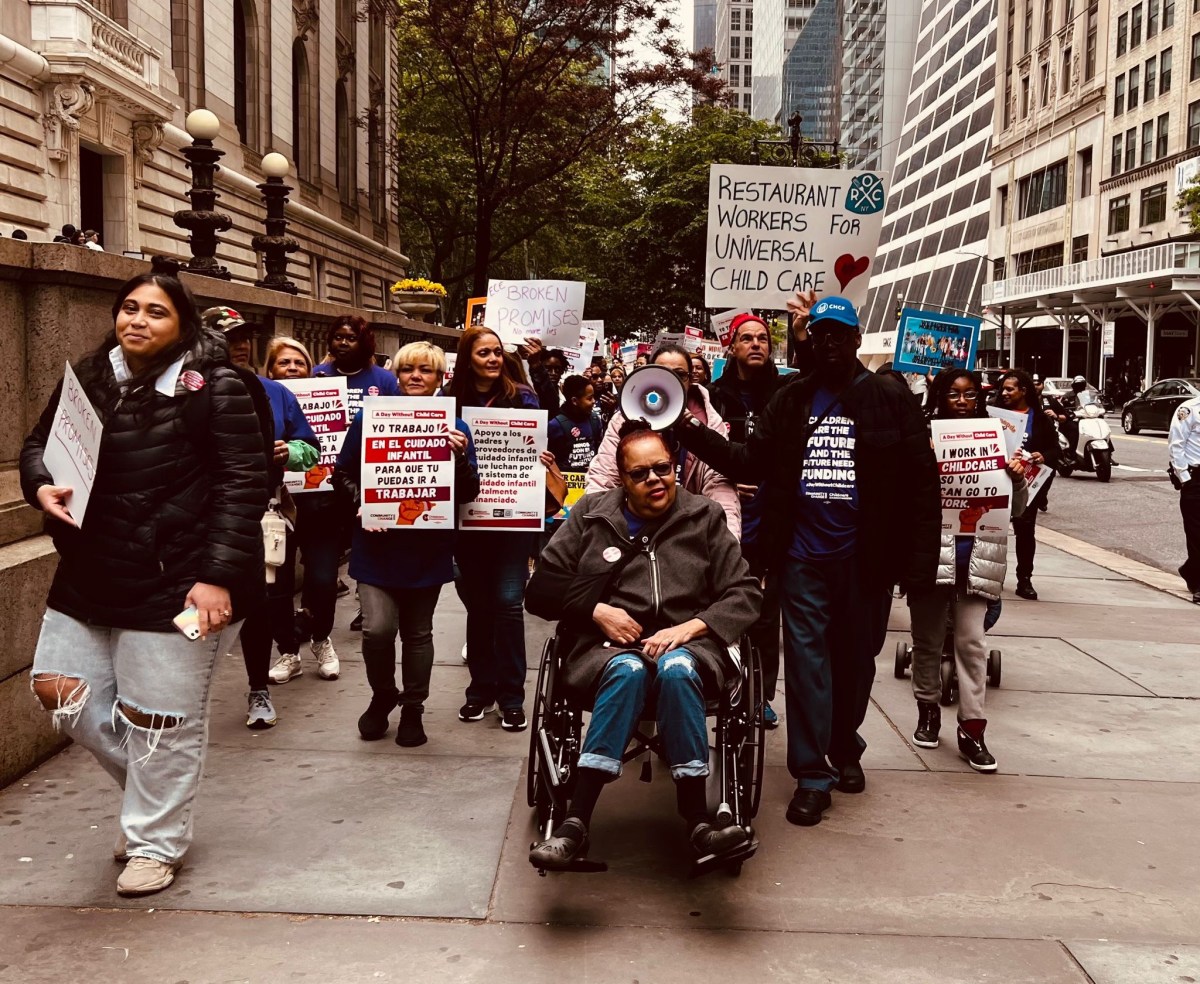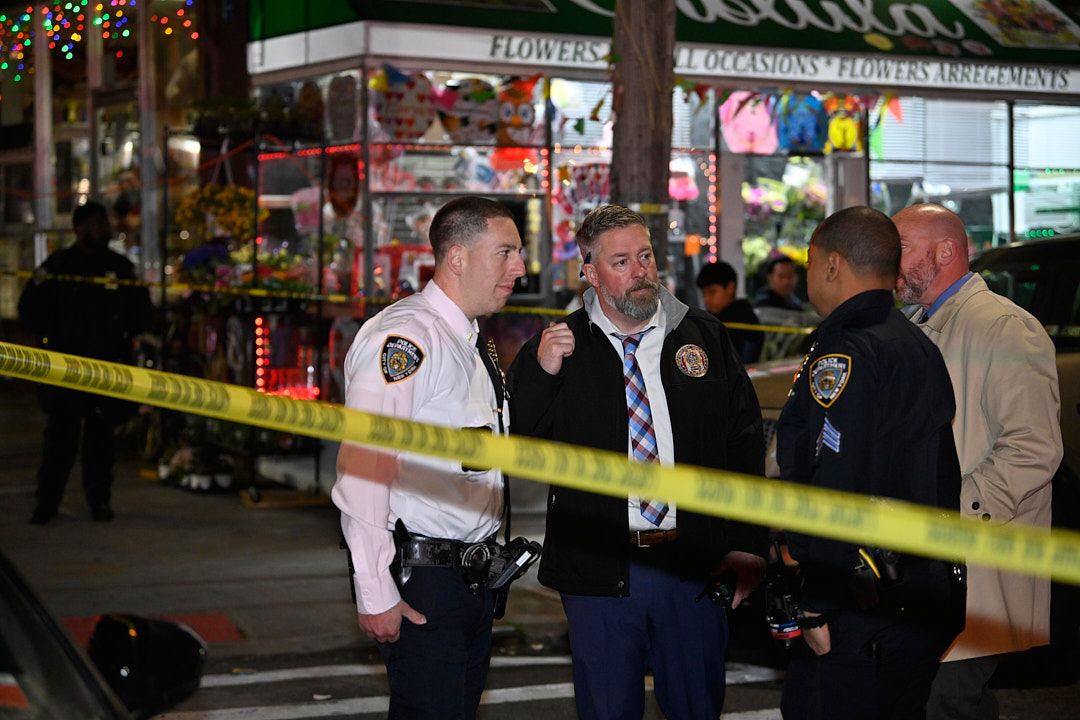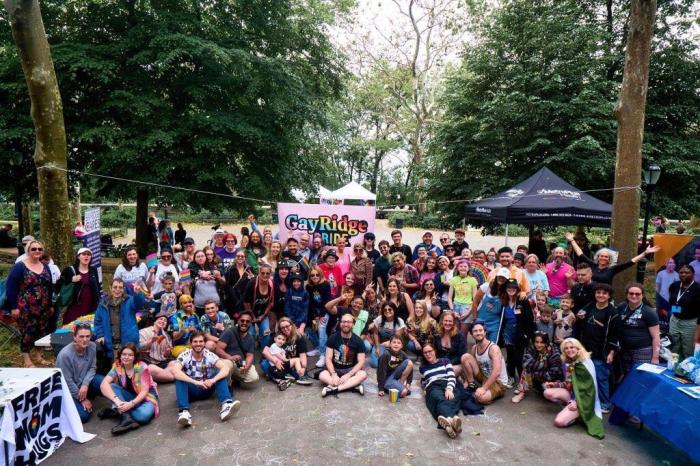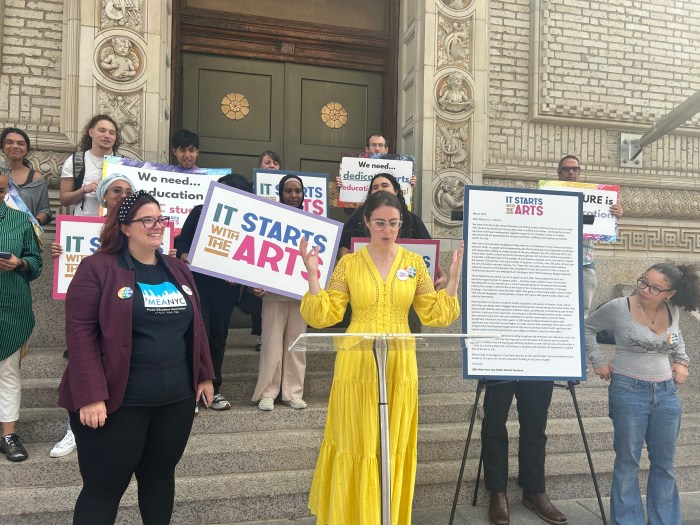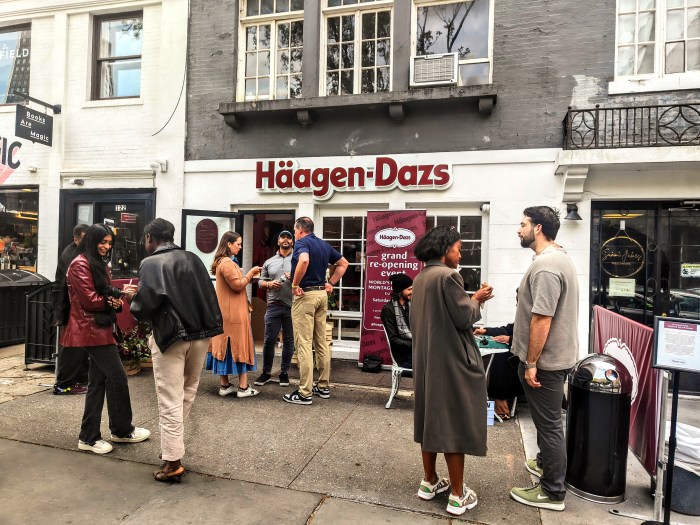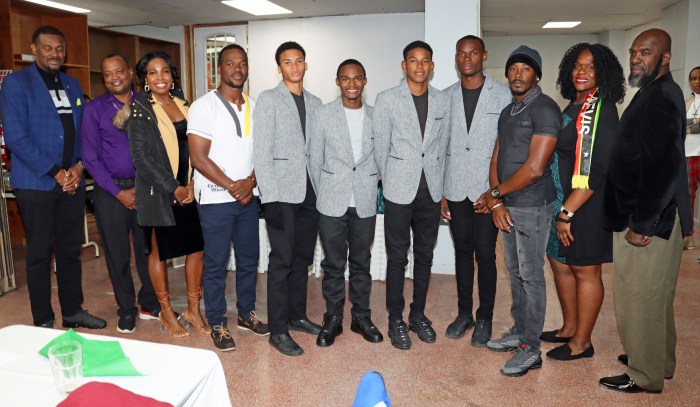PARK CITY, UTAH
— Just two weeks before the Sundance Film Festival opened, founder
Robert Redford was in Fort Greene announcing a new arts initiative
with the Brooklyn Academy of Music [read article].
On that day, Jan. 5, he mentioned the large number of Brooklyn
filmmakers that are represented at Sundance each year. And it
is true; it has become impossible to keep track of all of them.
So this year, instead of an attempt to round up all the mediamakers
from the borough who made the trip to Park City, Utah, here’s
the news from a representative cross section of directors, editors
and actors.
Prospect Heights resident Joseph Matthew came to Sundance with
his second documentary, "Crossing Arizona," which looks
at all sides of the illegal immigration issue, and landed a spot
in the independent documentary competition. Along the United
States-Mexico border, the film introduces us to men and woman
who risk all to get into this country illegally.
From lack of water, many die while making the trek, so humanitarian
volunteers roam through the area, giving water and food to the
illegals who are usually hiding on the side of the road to Tucson.
But others are looking for these illegals as well. Vigilantes
opposed to any aid for illegal immigrants are also wandering
the border. Their plan is to send them back to Mexico. And of
course, the U.S. Border Patrol is doing the same thing.
The idea of examining immigration came naturally to Matthew,
who came to the U.S. from India. GO Brooklyn caught up with him
in the Filmmakers Lodge on Main Street, where he spoke about
his career change from finance to film.
"I always wanted to tell human stories," said Matthew.
"I came to the U.S. to get my MBA, but being here was a
great opportunity to change direction." So he studied photography
and journalism instead. It was here that Matthew paid his dues
and developed an artistic eye.
It must be said that it is not enough to document these ideas
with a video camera. In order to have a film that will have an
impact, it has to be put together in a creative, moving way,
so that it will involve the viewer. To this end, Matthew worked
with three editors because "when you’re shooting, you become
emotionally attached and you can lack objectivity," he explained.
Editors help to coalesce all the information into a work that
moves as well as educates.
"If people aren’t moved, then the film isn’t effective,"
said Matthew. He found the film’s wide variety of subjects through
some of the humanitarian movements in Arizona while studying
international affairs at New York University, and this led him
to more groups.
"You hang out with people you meet, and then you meet others,"
said Matthew. "You see the news and track those people down,
and you go from there." And then he shot close to 200 hours
of footage.
"In making a documentary, research and shooting are part
of the same process," said Matthew. "You shoot and
see where the story’s going and get a sense of what the bigger
story will be."
Nick of time
James Ponsoldt has lived in Williamsburg for about a year, but
he grew up in Athens, Georgia, and that’s where the idea for
his film, "Off the Black," came from. The title is
a baseball reference (to the border of home plate), which makes
sense since Nick Nolte plays Ray, a divorced father who, instead
of being a professional baseball player, has wound up an umpire
for high school ball.
After a questionable call to end an important game, some of the
kids vandalize Ray’s home as he sits inside. He catches one of
the boys and they develop a father-son relationship that is disturbing
at first but seems to fulfill both their needs.
"I saw the father of a friend in a grocery store once,"
said Ponsoldt. He knew his friend was having big drug problems,
but he couldn’t bring himself to talk to the father, who seemed
to bear it all by himself.
"I felt like a coward to not say anything to him about his
own private pain," said Ponsoldt, who drew a comparison
to all of those people that we encounter constantly as we go
about our lives, but don’t realize that they have lives, too.
"My friend’s father was an umpire, and he wore a mask while
he worked. We never saw who he really was."
The film has a stellar cast, headed by Nolte as the messed-up
umpire. Seeing as this is Ponsoldt’s first feature – he had only
made shorts before, including his work at Columbia University,
where he studied filmmaking – one has to wonder how he managed
to snag Nolte. Did he have connections, or did Ponsoldt just
rely on a crack casting agent?
"It was pretty much a combination of both," he explained.
"I wanted to write a great part that would attract a great
actor. Scott Macaulay, one of my producers, had produced a French
film, ’Clean’ by Olivier Assayas with Nolte. So he went straight
to Nolte with the script.
"And I had a really good casting agent to get everyone else
on board." "Everyone else" includes Timothy Hutton
("Kinsey") and Sally Kirkland ("Anna").
So how does a young filmmaker, making his first feature, deal
with such veterans on the set?
"It was a pretty egoless set," recalled Ponsoldt. "Once
Nick was committed to doing it, he wanted to meet me – to make
sure I’m not a jerk, I guess – and he took great pleasure in
the part. He works like a child in that he finds the honesty
in the role."
Ponsoldt based the male characters on men in his own life, such
as his father and grandfather.
"They were taught not to express emotion, so they talk in
roundabout ways," he said. "It was impossible for them
to be emotionally honest."
Although Ponsoldt wrote the script in Georgia, it was shot in
upstate New York.
"I really needed agrarian, post-industrial, former factory
towns," he said, and he found them in New York state, in
towns like Suffern and Haverstraw.
"Off the Black" screened in the Spectrum section of
the Sundance Film Festival, which seems to cover most films not
in the competitive sections. The premiere screening was in the
1,000-seat Eccles Theater.
"It was fantastic," said Ponsoldt. "The place
was so packed, my friends couldn’t get in!" And much of
his cast and crew were there to participate in the question and
answer session after the screening.
While the public screenings are a rush, let’s not forget that
Sundance is very much about the business of film.
"[Columbia University professor and ’Brokeback Mountain’
producer] James Schamus says that there are two parts to a film,
making it and selling it, and that the two shouldn’t be confused,"
said Ponsoldt.
Clearly he hasn’t confused them, as his producer and sales rep
have been talking to a handful of people regarding theatrical
distribution. That’s so you’ll be able to see it in a theater
near you.
Return to ’Gowanus’
Two years ago, Park Slope filmmakers Ryan Fleck and Anna Boden
were at Sundance with their award-winning short, "Gowanus,
Brooklyn," and the film’s talented young star, Shareeka
Epps. Now that they’ve developed that short into the feature
film "Half Nelson," they returned to the festival,
in the dramatic feature competition.
And Shareeka is back, too.
Now 16-years-old, the actress plays the same character, Drey,
a young student who tries to figure out her life with some not-so-hot
father-figure role models to deal with, including Ryan Gosling
as a well-meaning teacher with inner demons raging.
GO Brooklyn hung out with Shareeka at a party at Zoom restaurant
on Main Street. Formerly from Red Hook, Shareeka now lives in
upstate New York, but she did go home again, as the film was
shot in Fort Greene, Red Hook, East New York and other Brooklyn
neighborhoods. Here at Sundance, Shareeka was, again, having
the time of her life.
The high point had to be when Terrence Howard, the current "it"
man of independent film ("Crash," "Hustle and
Flow," "Lackawanna Blues") walked up to her, shook
her hand and said he liked her work.
"I looked at him and said, ’You’re Terrence Howard!’"
she said. But she was also impressed with the "swag"
available to Sundance "talent": she modeled her new
jacket and cap for GO Brooklyn.
Crown Heights actor Anthony Mackie, who plays Frank, the drug-dealing
friend of Drey’s incarcerated brother, had yet to find the swag,
but he was having fun.
"There are lots of parties here," he said, "and
more fun because the film was so well received."
Fleck and Boden were also enjoying the party, but they were in
business mode. Fleck told GO Brooklyn that this Sundance visit,
with a film in competition, "was nervewracking. So many
people who love the film have invested money in it. We really
need to sell it."
Their wish came true, as New York-based distribution company
THINKFilm picked up "Half Nelson" for distribution
by the festival’s end.
Making the cut
"The Trials of Darryl Hunt" follows the two-decade
long search for justice of a man wrongly convicted of rape and
murder in North Carolina. Filmmakers Ricki Stern and Annie Sundberg
chose Park Slope editor Shannon Kennedy to put the film in its
final form. Just as "Crossing Arizona" director Joseph
Matthew spoke of the importance of editors in completing his
documentary, Kennedy cast her fresh eye on the 400 to 500 hours
of footage that was brought to her.
"You have to figure out how to tell the story," she
told GO Brooklyn at a party off Main Street. "You find the
most compelling stories by reading hours and hours of transcripts."
As an editor, Kennedy had a basic idea of what she wanted to
do, and the filmmakers left her alone for awhile to watch footage,
but at the same time, there was a lot of pressure to get just
the right mood. She feels that she and the directors got that,
and that the film will speak to people.
GO Brooklyn spoke with Kennedy while the filmmakers were doing
a television interview outside the party at Buona Vita restaurant.
"Now I get to just enjoy the festival," said Kennedy.
"I’m very much behind the scenes here." Her work was
clearly done, and she relaxed.
And so it goes for all the filmmakers plying their trade at Sundance.
Actors and editors (at least most of them) don’t have to deal
with the business end of the production. But for directors and
producers, the festival is a non-stop ride: present your film
to the public and have earnest conversations about your work,
and then try to drive a hard bargain to sell your film to a distributor
who will give it a life beyond the film festival circuit.
For Fleck and Boden, their job is done, with a distributor in
place. For the others, discussions will go on, as will the hope
for a deal. You can be sure that with or without distributors,
most of these films and those by many other Brooklyn artists,
will be on screens within the year. Some of them will be screened
in Fort Greene, as part of the Sundance and BAM collaboration,
"Creative Latitude" as early as May.
Marian Masone is the associate
director of programming for the Film Society of Lincoln Center
and chief curator of The New York Video Festival also at Lincoln
Center.
"Creative Latitude: Sundance Institute
at BAM," a series of film screenings, performances, panel
discussions and special events that brings the selections from
the Sundance Film Festival the Brooklyn Academy of Music, takes
place May 11-20, 2006. For more information, visit www.bam.org.


